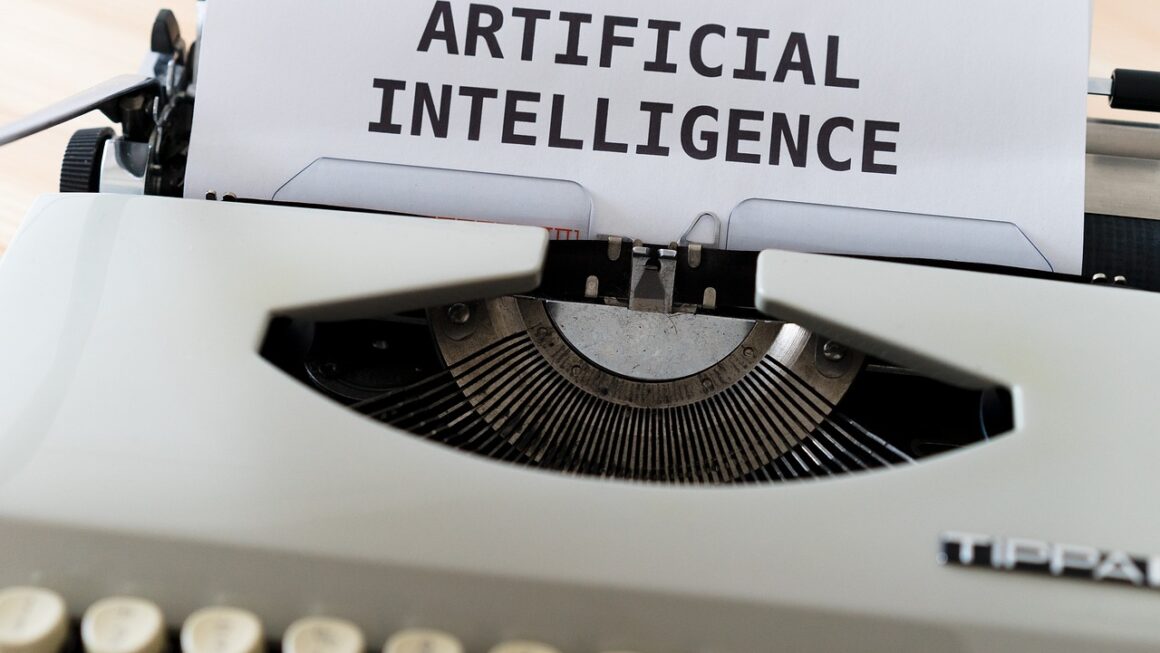AI is no longer a futuristic fantasy; it’s a powerful reality transforming businesses across all sectors. But raw AI power needs direction. That’s where AI analytics comes in, bridging the gap between vast datasets and actionable business intelligence. AI analytics isn’t just about crunching numbers; it’s about uncovering hidden patterns, predicting future trends, and optimizing decision-making with unprecedented accuracy. Let’s delve into the world of AI analytics and discover how it can revolutionize your business.
Understanding AI Analytics
What Exactly is AI Analytics?
AI analytics combines the power of artificial intelligence with traditional analytics methodologies. It leverages machine learning algorithms, natural language processing (NLP), and other AI techniques to automate data analysis, identify complex patterns, and generate insights that would be impossible to discover using conventional methods alone. Think of it as traditional business intelligence on steroids.
- AI analytics empowers businesses to:
Automate repetitive data analysis tasks.
Uncover hidden patterns and anomalies in data.
Make more accurate predictions and forecasts.
Improve decision-making across all departments.
* Gain a competitive advantage through data-driven insights.
Key Differences from Traditional Analytics
Traditional analytics relies heavily on human intervention, requiring analysts to manually explore data, define queries, and interpret results. AI analytics, on the other hand, automates many of these processes, allowing for faster and more comprehensive analysis. Here’s a comparison:
- Data Exploration: Traditional analytics relies on predefined queries; AI analytics automatically explores data for hidden patterns.
- Pattern Recognition: Traditional analytics struggles with complex, non-linear patterns; AI analytics excels at identifying intricate relationships.
- Scalability: Traditional analytics can be limited by human capacity; AI analytics can handle massive datasets with ease.
- Automation: AI analytics automates data cleaning, preprocessing, and analysis tasks.
The Benefits of AI Analytics for Business
Increased Efficiency and Productivity
AI analytics significantly reduces the time and resources required for data analysis. By automating tasks like data cleaning, preprocessing, and reporting, it frees up analysts to focus on more strategic initiatives.
- Example: Instead of manually sifting through customer feedback to identify common complaints, AI analytics can automatically analyze text data from surveys, reviews, and social media, providing a comprehensive overview of customer sentiment.
Improved Decision-Making
AI analytics provides businesses with more accurate and insightful information, enabling them to make better-informed decisions. By predicting future trends and identifying potential risks, it helps organizations stay ahead of the curve.
- Example: A retailer can use AI analytics to predict demand for specific products based on historical sales data, weather patterns, and social media trends, optimizing inventory levels and minimizing waste.
Enhanced Customer Experience
AI analytics allows businesses to understand their customers better, enabling them to personalize interactions and improve customer satisfaction. By analyzing customer data, businesses can identify individual needs and preferences, delivering tailored experiences that drive loyalty.
- Example: An e-commerce company can use AI analytics to recommend products to customers based on their past purchases, browsing history, and demographics, increasing sales and improving customer engagement.
Reduced Costs and Risks
By identifying inefficiencies and potential risks, AI analytics helps businesses reduce costs and minimize losses. By predicting equipment failures, fraud, and other adverse events, it allows organizations to take proactive measures to mitigate risks.
- Example: A manufacturing company can use AI analytics to predict equipment failures based on sensor data, enabling them to schedule maintenance proactively and avoid costly downtime.
Applications of AI Analytics Across Industries
Healthcare
AI analytics is revolutionizing healthcare by improving diagnosis accuracy, personalizing treatment plans, and optimizing hospital operations.
- Example: AI algorithms can analyze medical images to detect diseases like cancer with greater accuracy than human radiologists.
- Example: AI can predict patient readmission rates, allowing hospitals to implement targeted interventions to improve patient outcomes.
Finance
AI analytics is helping financial institutions detect fraud, assess credit risk, and provide personalized financial advice.
- Example: AI algorithms can analyze transaction data to identify fraudulent activities in real-time, preventing financial losses.
- Example: AI can assess credit risk by analyzing a wide range of data sources, including credit history, social media activity, and alternative data.
Retail
AI analytics is transforming retail by optimizing pricing, personalizing marketing campaigns, and improving supply chain management.
- Example: AI algorithms can dynamically adjust prices based on demand, competitor pricing, and inventory levels, maximizing revenue.
- Example: AI can personalize marketing campaigns by targeting customers with tailored offers and promotions based on their individual preferences.
Manufacturing
AI analytics is improving manufacturing efficiency by predicting equipment failures, optimizing production processes, and enhancing quality control.
- Example: AI algorithms can analyze sensor data to predict equipment failures, enabling manufacturers to schedule maintenance proactively and avoid costly downtime.
- Example: AI can optimize production processes by identifying bottlenecks and suggesting improvements.
Implementing AI Analytics: A Practical Guide
Defining Clear Objectives
Before implementing AI analytics, it’s crucial to define clear objectives and identify the specific business problems you want to solve. What questions are you trying to answer? What insights are you hoping to gain?
- Example: Instead of simply saying “we want to use AI analytics,” specify “we want to use AI analytics to reduce customer churn by 15% in the next quarter.”
Data Preparation and Management
AI analytics relies on high-quality data. Ensure your data is clean, accurate, and properly formatted. Invest in data management tools and processes to maintain data quality over time.
- Tip: Use data profiling tools to identify inconsistencies and errors in your data. Implement data validation rules to prevent bad data from entering your system.
Choosing the Right AI Tools and Technologies
Select AI tools and technologies that align with your specific needs and budget. Consider factors such as scalability, ease of use, and integration with existing systems.
- Examples: Consider using cloud-based AI platforms like Amazon SageMaker, Google AI Platform, or Microsoft Azure Machine Learning. Explore open-source tools like TensorFlow, PyTorch, and scikit-learn.
Building an AI Team (or Partnering with Experts)
You’ll need a team of skilled data scientists, machine learning engineers, and domain experts to build and deploy AI analytics solutions. If you don’t have the in-house expertise, consider partnering with an experienced AI consulting firm.
- Tip: Look for individuals with strong analytical skills, programming expertise, and a deep understanding of your industry.
Continuous Monitoring and Improvement
AI analytics is not a one-time project. Continuously monitor the performance of your AI models and make adjustments as needed. Regularly evaluate the results and identify areas for improvement.
- Tip: Use A/B testing to compare the performance of different AI models. Track key metrics to measure the impact of your AI analytics initiatives.
Ethical Considerations in AI Analytics
Bias and Fairness
AI algorithms can inherit biases from the data they are trained on, leading to unfair or discriminatory outcomes. It’s crucial to identify and mitigate bias in your data and algorithms.
- Example: An AI algorithm used for loan approval may discriminate against certain demographic groups if it is trained on biased data.
Privacy and Security
Protecting the privacy and security of sensitive data is paramount. Implement robust security measures to prevent data breaches and comply with relevant regulations.
- Tip: Use data anonymization techniques to protect the privacy of individuals. Implement access controls to restrict access to sensitive data.
Transparency and Explainability
Ensure that your AI models are transparent and explainable. Users should be able to understand how the models work and why they make certain decisions.
- Example: Use explainable AI (XAI) techniques to provide insights into the decision-making process of AI models.
Conclusion
AI analytics represents a paradigm shift in how businesses analyze data and make decisions. By embracing AI-powered insights, organizations can unlock new levels of efficiency, improve customer experiences, and gain a competitive edge. While implementing AI analytics requires careful planning and execution, the potential benefits are undeniable. Start exploring the possibilities today and unlock the power of AI to transform your business. The future of analytics is here, and it’s intelligent.




